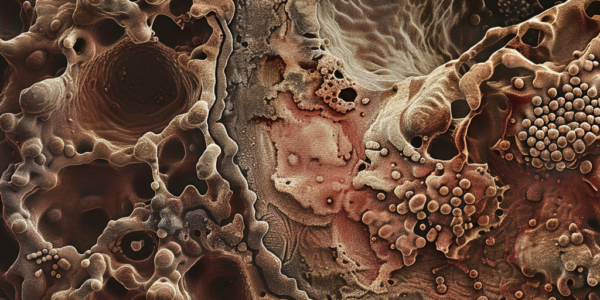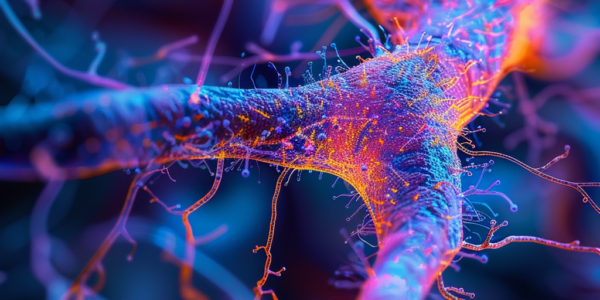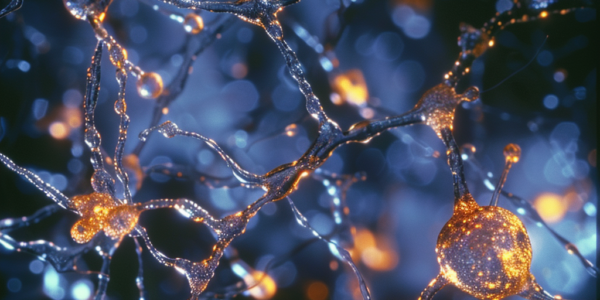New Atlas of Human Ovary Offers Potential for Innovative Treatments
Researchers at the University of Michigan have created a new atlas of the human ovary through single-cell RNA sequencing, leading to potential new treatments such as artificial ovaries and interventions to address infertility and hormone production issues. This research sheds light on the factors that enable a follicle to mature and could have a significant impact on individuals who have undergone toxic medical treatments like chemotherapy and radiation.
Groundbreaking Advancement in Cancer Treatment with Protein Micromaterials
Researchers at the Autonomous University of Barcelona have developed groundbreaking micromaterials composed of proteins for targeted cancer treatment. These self-contained micromaterials mimic natural secretory granules, delivering nanoparticles to specific cancer cells for destruction. The technology, patented by the researchers, has shown high performance in animal models of colorectal cancer, offering potential for enhanced drug efficiency and patient comfort while minimizing side effects.
Enhanced Mitochondrial Fusion and Nerve Cell Function
Recent research from the University of Cologne’s CECAD Cluster of Excellence in Aging Research highlights the role of enhanced mitochondrial fusion in fueling nerve cell function and plasticity. The study has significant implications for brain repair approaches during disease and offers new avenues for potential therapeutic interventions in neurological disorders.
Household Chemicals May Adversely Affect Brain Development, New Study Finds
A new study suggests that everyday household chemicals, found in disinfectants, furniture, and even toothpaste, could have adverse effects on brain development. The study highlights the potential risks posed by these substances to brain health and their potential association with neurological conditions such as multiple sclerosis and autism spectrum disorders. The findings call for more comprehensive scrutiny of the impacts of common household chemicals on brain health and suggest the need for informed decisions regarding regulatory measures or behavioral interventions to minimize chemical exposure and protect human health.
New Study Reveals Comprehensive Single-Cell Reference Map of Healthy Human Breast
A new study in Nature Genetics unveils a comprehensive single-cell reference map of the healthy human breast, revealing surprising indications of immune exhaustion in individuals with BRCA1 or BRCA2 germline mutations. Lead researcher Dr. A. D. Reed and the team’s curated single-cell reference map offers valuable insights into the cellular composition of the human breast, shedding light on the interplay between genetic mutations and immune function.
Study Shows Microglia Play Crucial Role in Brain’s Recovery from Anesthesia
Recent study by Mayo Clinic reveals the crucial role of microglia in aiding the brain’s recovery from anesthesia, offering potential for innovative treatments for anesthesia-related complications. Microglia engage with neurons and inhibitory synapses to mitigate the aftereffects of anesthesia, enhancing neuronal activity for brain awakening. Understanding the pivotal role of microglia in aiding the brain’s awakening process post-anesthesia opens new possibilities for managing and mitigating the adverse effects of sedation.
New Study Suggests Fat Droplets in Brain Cells May Be Key to Fighting Alzheimer’s
Recent study suggests that fat droplets within brain cells could be a key factor in Alzheimer’s disease development. Targeting these droplets may lead to more effective treatments, opening up a new avenue for therapeutic development. This sheds new light on the potential role of fat deposits in brain cells in causing Alzheimer’s, offering a fresh perspective for future research and treatment development.
Breakthrough in Understanding Cancer Cell Adaptation to Low Oxygen Environments
Researchers at the Francis Crick Institute have discovered how cancer cells adapt to low oxygen environments, offering potential insights into preventing therapy resistance. The study revealed that cancer cells increase glycolysis within three hours of oxygen deprivation, independent of HIF1α, with the crucial role of enzymes LDHA and GOT1 in regulating the process. This breakthrough could have implications for targeting treatment-resistant cancer cells within tumors with limited oxygen access.
Groundbreaking Atlas of Developing Human Heart Cells Reveals 75 Cell Types
Scientists have published the most comprehensive cell ‘atlas’ of the developing human heart, unveiling 75 types of heart cells, including never-before-seen cell types. The detailed map provides insights into the organization of cells to form different internal structures of the heart in the womb, shedding light on how various cells interact during heart development. This groundbreaking work opens new avenues for understanding heart development and lays a foundation for potential advancements in cardiac research and regenerative medicine.
Link Between Schizophrenia and Aging Uncovered in New Study
Recent research published in Nature suggests a potential link between schizophrenia and aging, revealing coordinated changes in gene expression activity in neurons and astrocytes as a key factor. The study’s findings offer valuable insights into the potential biological underpinnings of cognitive decline in schizophrenia and aging, providing hope for future targeted interventions and therapies.










